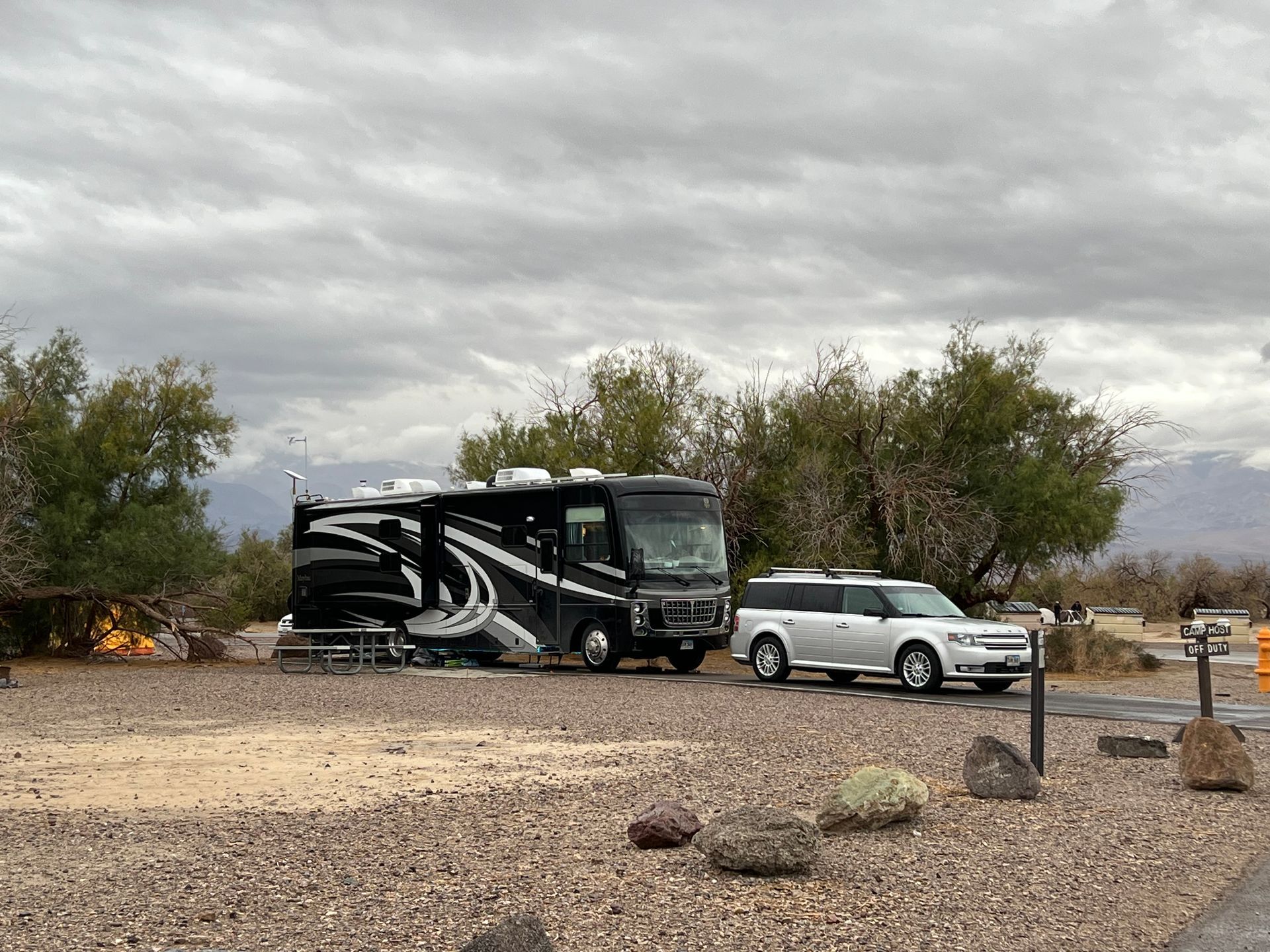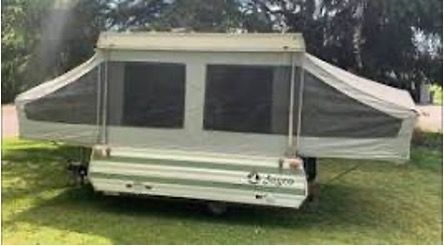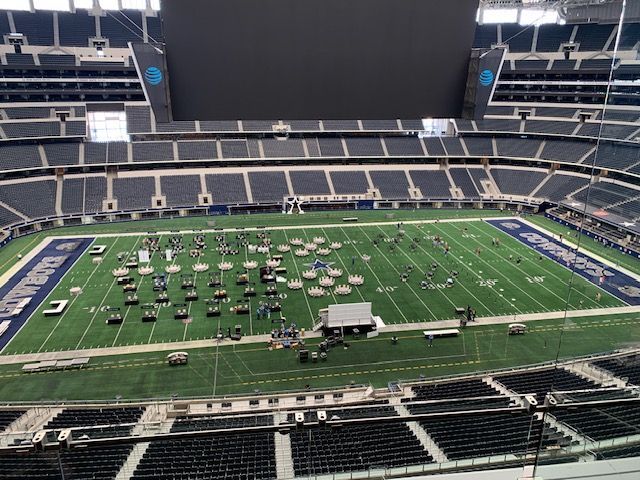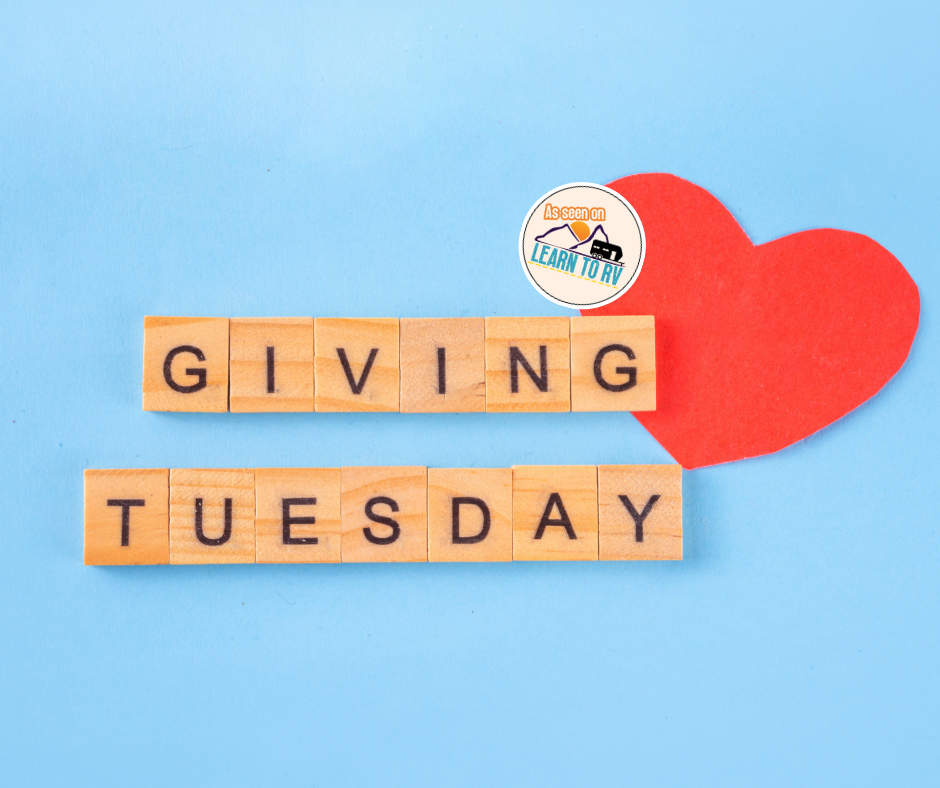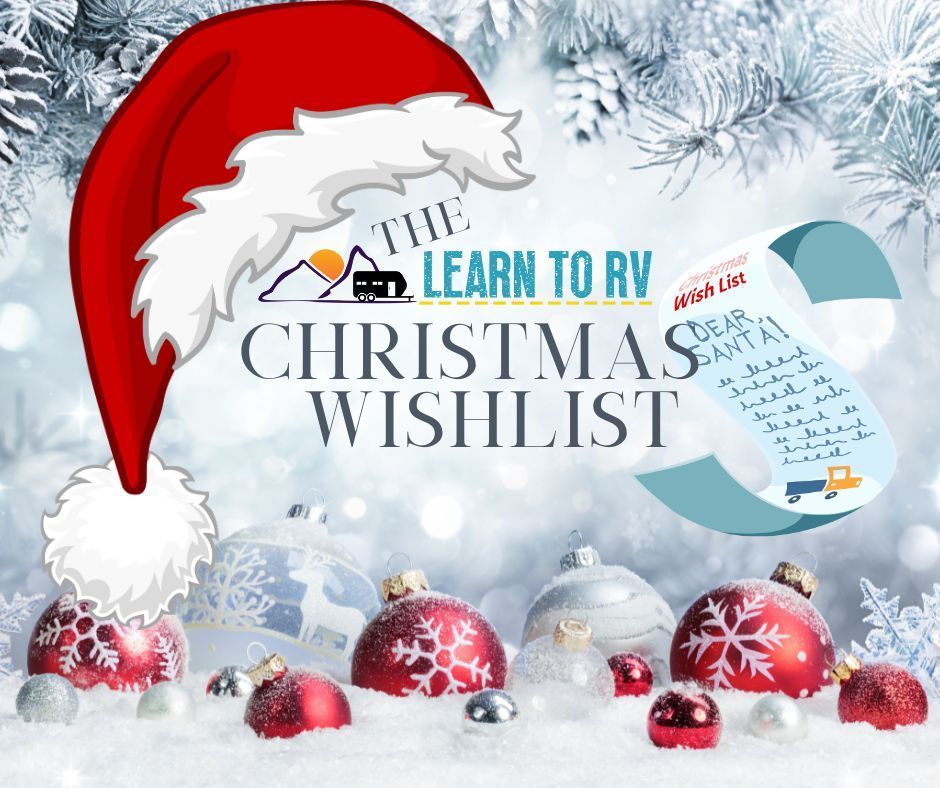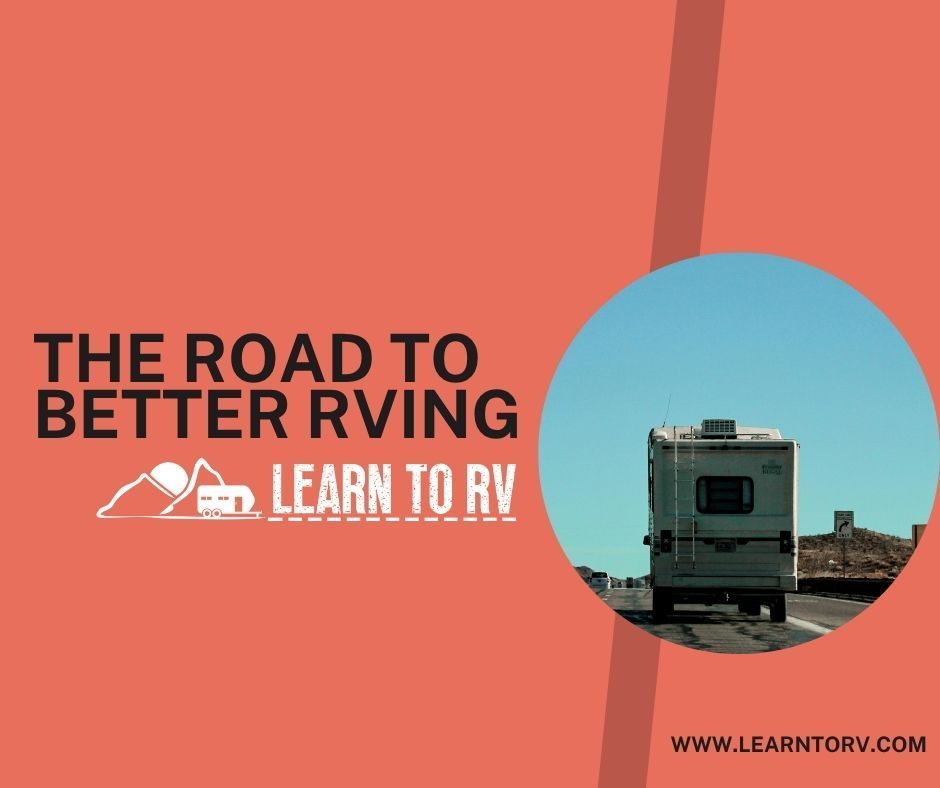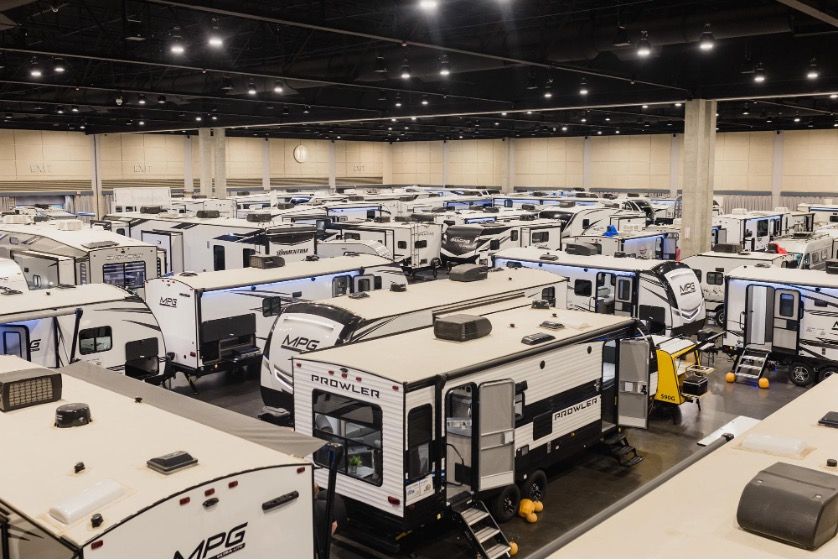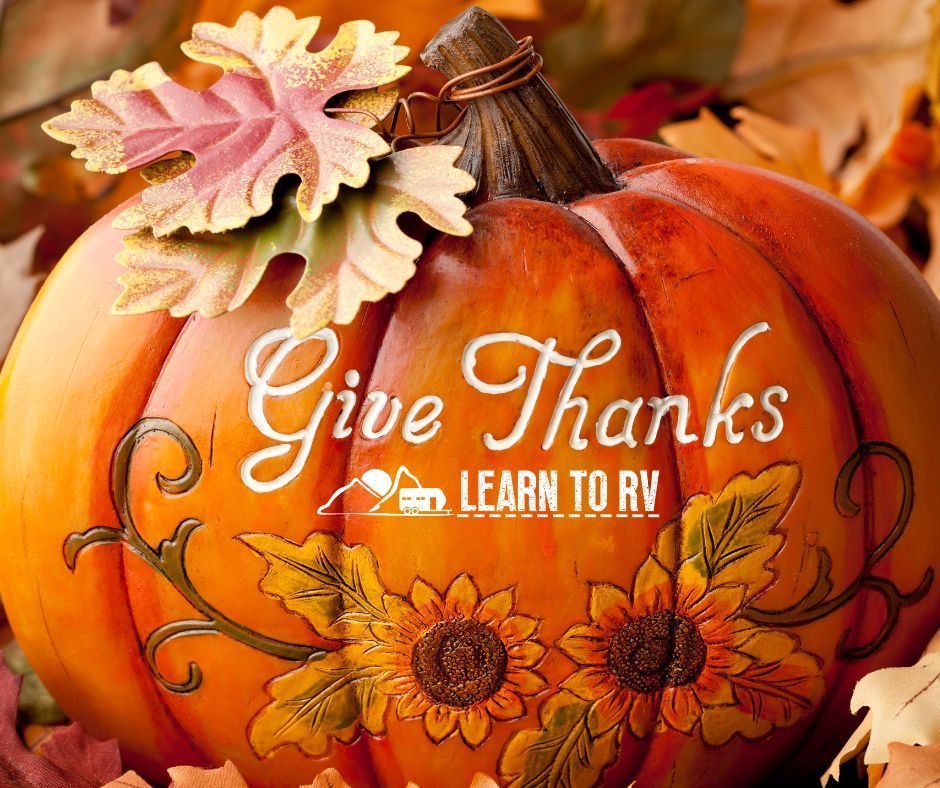One Vehicle or Two? The Real Costs and Realities of Full-Time RV Life with a Family
Jennifer+ Aggio • October 15, 2025
Can a family of six really travel full-time with just one vehicle?
The short answer: Yes, we did it for years. But should you? That's much more complicated.
When we first started full-time RVing, having two vehicles seemed ridiculous—an unnecessary expense we couldn't justify. We squeezed our family of six into a 13-passenger van towing a 37-foot travel trailer, after that followed a 38-foot motorhome with a flat-towed Ford Flex.
Then came a fifth wheel.
Today, we travel in a 42-foot fifth wheel pulled by an F350 dually with a 7.3L gas engine. We also have a second vehicle—our Ford Expedition. The setup I swore we'd never need has become our daily reality.
What changed? The impracticality of driving a dually to the grocery store, Philip, my husband’s, concerns about preserving our expensive truck, and our growing family needs. But here's the truth: we could absolutely survive with just our truck. It seats six with a bench seat up front.
The question isn't "Can you full-time RV with one vehicle?" It's "Should you add the expense, complexity, and logistics of a second vehicle to your life?" That answer depends entirely on your budget, your family dynamics, and your priorities.
In this guide, I'm breaking down the real costs—not just purchase price, but insurance, fuel, maintenance, and hidden expenses. We'll walk through the genuine pros and honest cons, share what worked when we had one vehicle, why we added a second, and whether it's worth it.
Wondering about other aspects of full-time RV family life? Check out our podcast and join the Learn to RV community where lots of families share their experiences!
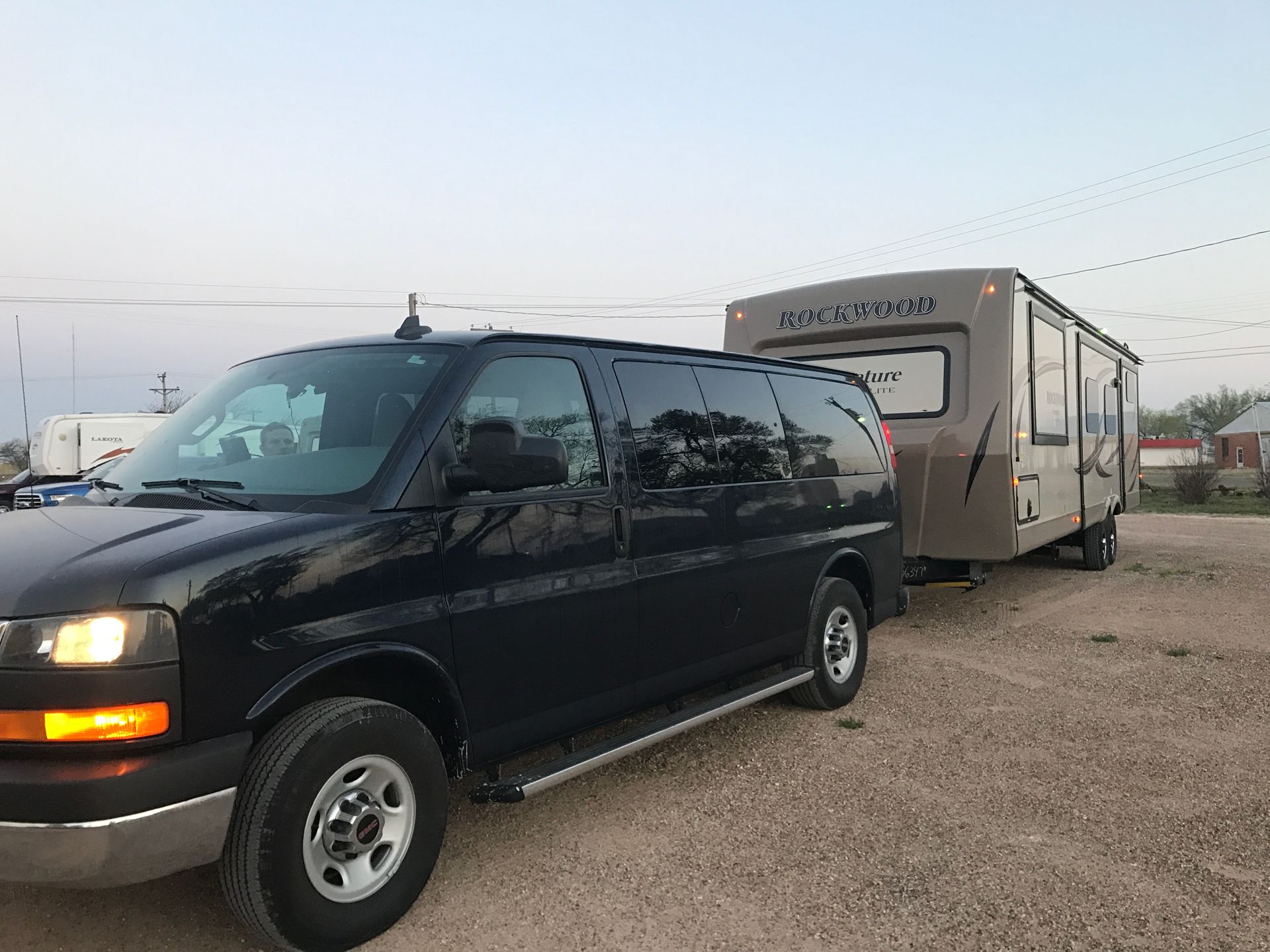
Our Journey - From One Vehicle to Two
The One-Vehicle Years: When It Actually Worked
For years, we traveled full-time with one vehicle, and it genuinely worked well. The van seated everyone comfortably, got decent fuel economy for its size, and parking was manageable. We never once thought, "We need another vehicle."
A few years into our journey we upgraded to a 38-foot motorhome + flat-towed a Ford Flex. The Flex was our toad. Unhook at the campground, instant transportation. It seated all six of us comfortably and served as our daily driver while the motorhome stayed parked. This worked beautifully.
We never considered adding a separate second vehicle. Why would we? We had everything we needed.
Why We Switched to Two Vehicles: The Fifth Wheel Changed Everything
When we started looking at fifth wheels, the second vehicle conversation became unavoidable.
The reality of the F350 dually:
Our new towing vehicle is incredible for towing our 42-foot fifth wheel. But it's terrible for everything else. Parking? Forget it. Fuel economy for errands? Not happening. This expensive truck has a very specific, hard-to-find configuration. Replacing it wouldn't be simple or cheap.
The debate:
Philip didn't want to drive the dually everywhere. He worried about wear and tear and didn't want unnecessary miles on something irreplaceable. He was right.
I resisted for months. "We got a bench seat specifically so all six of us could fit. We can do this with one vehicle." And I was right too—we could survive with just the truck.
But "possible" and "practical" aren't the same thing.
The transition:
We bought the truck while still having the motorhome and Flex—we wanted to be ready if we found the perfect fifth wheel deal. For a year, we had all three vehicles. On travel days, I didn't like being separated from the family.
Once we transitioned to the fifth wheel, keeping the Flex made sense. Let's try it and see. Much to my dismay, there were lots of benefits. As time passed, our kids grew, we added a dog, and we outgrew the Flex. Decision time: drop to one vehicle or upgrade the second? We chose a Ford Expedition—seats everyone comfortably, easy to drive, and it’s not embarrassingly huge.
Our Current Reality
Could we survive with just the truck? Absolutely. We even take it out sometimes—like heading to the lake to kayak.
Do we appreciate the Expedition? Also, yes. Daily life is easier, less stressful, more comfortable.
It's not about need. It's about lifestyle preferences and budget. For us, the second vehicle falls somewhere between necessity and luxury.
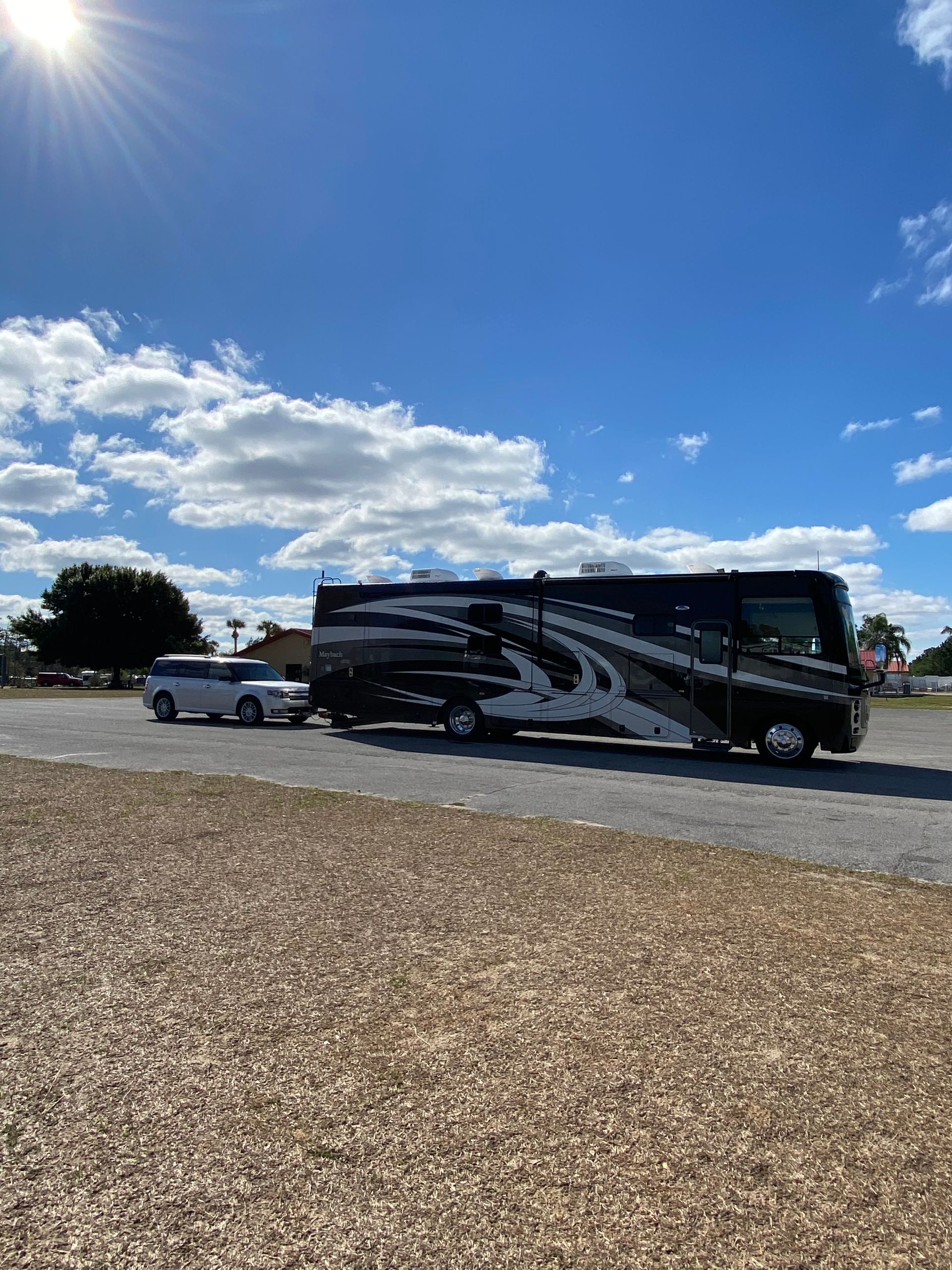
The Financial Reality - What Two Vehicles Actually Costs
Let's talk real numbers. Adding a second vehicle isn't just about purchase price, it's about ongoing costs that add up month after month.
One-Time/Upfront Costs
Purchasing the Second Vehicle:
- Used vehicle: $10,000-40,000+
- New vehicle: $35,000-70,000+
We chose a Ford Expedition: seats our family of six comfortably, known for reliability, parts are easy to find, and enough cargo space without being oversized.
Don't forget financing costs: A $40,000 vehicle at 6% interest over 5 years means paying nearly $47,000 total—that's $7,000 just in interest.
Initial Setup:
- Registration and title fees: $200-800
- Sales tax: Can be thousands (some states charge 7-10%)
- Immediate maintenance if buying used: $500-2,000
Total upfront investment: $10,000-70,000+
Ongoing Monthly/Annual Costs
Insurance: $800-2,400/year ($65-200/month)
Rates vary based on your state, driving record, vehicle value, and insurance company. Shop around, rates can vary by hundreds annually. For full-time RVers, make sure your insurer understands your living situation.
Fuel: $150-400/month
Your second vehicle likely gets much better fuel economy than your towing vehicle.
Real calculation: 500 miles every 2 weeks for errands and exploring:
- Second vehicle (20 MPG): 25 gallons = $87.50 (at $3.50/gallon)
- Dually (10 MPG): 50 gallons = $175
Fuel savings: ~$176/month by using the more efficient vehicle.
While you're spending $150-400/month on fuel for the second vehicle, you're saving money by not putting those miles on your gas-guzzling tow vehicle. This partially offsets the cost.
Maintenance: $800-1,500/year ($65-125/month)
- Oil changes: 2-4 per year at $50-80 each
- Tire rotations: $50-100/year
- Tire replacement: $600-1,200 every 3-5 years
- Brakes: $300-800 every few years
- Unexpected repairs: Budget $500/year minimum
Two vehicles mean double the maintenance schedule, double the shop visits, double the problems.
Registration/Tags: $100-500/year
Varies dramatically by state. Full-time RVers need to be especially aware of their domicile state's requirements.
Depreciation: The Silent Budget Killer
New vehicles lose 20-30% value in the first year, continuing at 10-15% annually. A $50,000 Expedition is worth roughly $35,000-40,000 after one year. That's $10,000-15,000 in lost value in year one alone.
Total Annual Cost: $3,000-6,000+/year
Mid-range scenario:
- Insurance: $1,200/year
- Fuel: $2,112/year ($176/month average)
- Maintenance: $1,000/year
- Registration: $300/year
- Total: $4,612/year
Monthly reality: $200-380+ every single month to own and operate that second vehicle.
The Break-Even Analysis
If your second vehicle costs $4,612/year and you keep it 15 years, that's $69,180 spent. If it helps your truck last 5 extra years and avoids one $80,000 truck replacement, you roughly break even. You're adding it for convenience, comfort, and peace of mind. And that's okay! Just be honest about it.
But here's the reality: This is a lifestyle choice, not a money-saving decision.
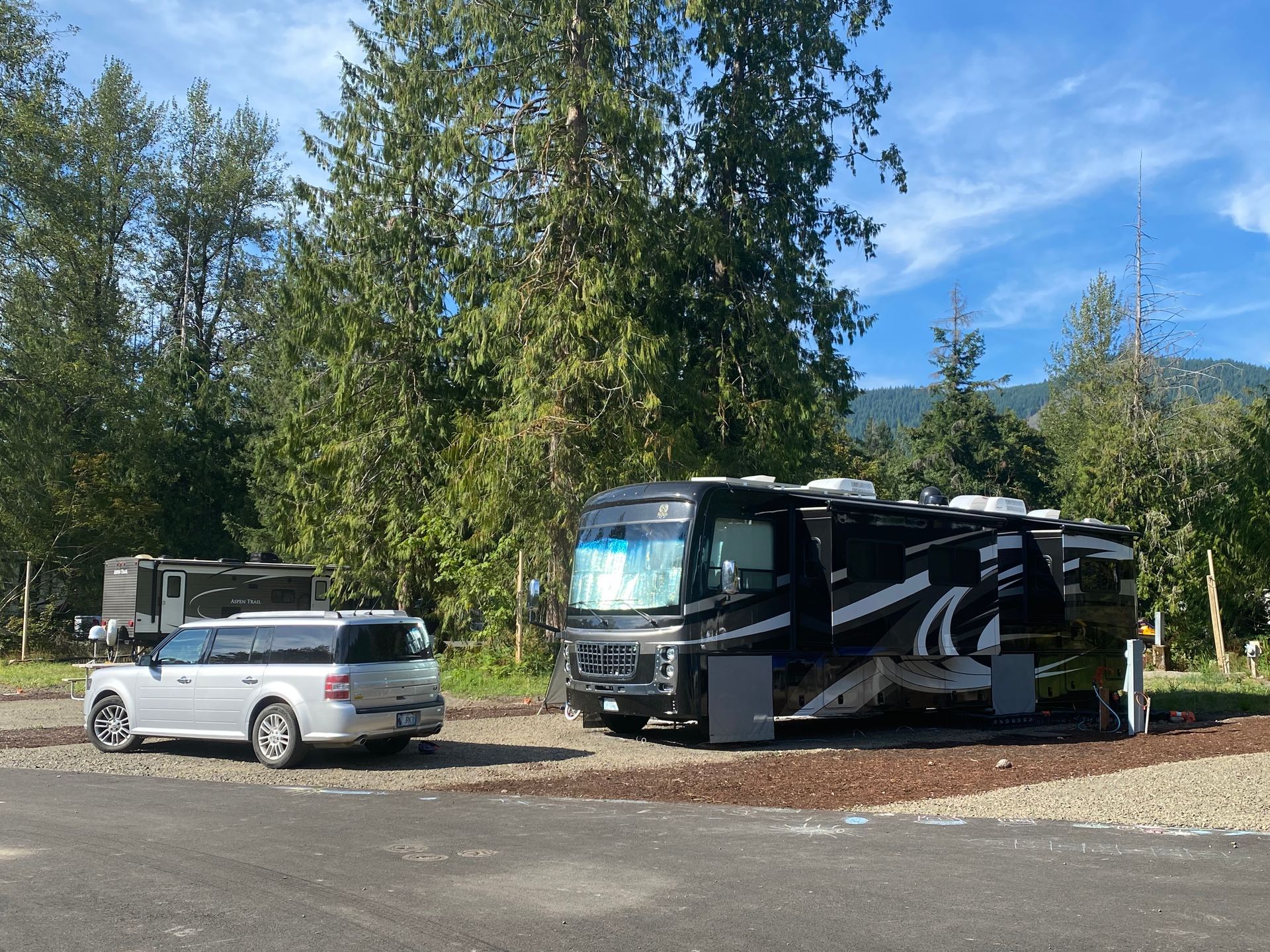
The Pros of Having Two Vehicles
Despite the expense, there are legitimate benefits—some practical, some quality-of-life, and some that might save money long-term.
1. Saves Wear and Tear on Your Towing Vehicle
Our F350 dually isn't just expensive, it's hard to replace. The specific configuration (crew cab with bench seat, 7.3L gas engine, 4.30 axle ratio, dually) took months for us to find.
Every mile driven is wear on the transmission, engine, tires, and suspension. If having a second vehicle extends your truck's life by 3-5 years, you're delaying a $60,000-80,000 replacement. Lower mileage also means fewer major repairs—transmissions, engines, and differentials last longer.
2. Daily Driving Comfort and Practicality
Driving a dually to Target is miserable.
Parking: You're taking up two spaces or hanging over lines. Downtown areas? Forget it. Parking garages? Most have height restrictions.
Fuel efficiency: Our Expedition gets 20+ MPG. Our dually? Maybe 8 MPG when towing, 12-15 MPG empty. For a 50-mile round trip, we burn nearly twice as much fuel in the truck.
Maneuverability: Drive-thrus, tight parking lots, narrow streets—all exponentially easier in a normal-sized vehicle.
Stress reduction: Quick pharmacy run in the Expedition? Ten minutes. Same errand in the dually? Twenty minutes of stress-parking and hoping nobody parks too close.
Bonus: If you caravan the chase vehicle can be your gate to changing lanes when in heavy traffic. Having that vehicle behind you helping watch out for others can be a major stress relief. P.S. Make sure you use walkie talkies!
3. Family Comfort and Flexibility
For a family of six, this is huge.
Bench seat reality: All six of us fit in the truck, but three adults and teens crammed shoulder-to-shoulder isn't comfortable.
Expedition comfort: Individual seats, actual space between people, separate climate zones, room for the dog.
Split-up capability: Philip can take older kids to an activity while I stay back with younger ones and still have transportation. Someone can run errands without the entire family. Teens can visit friends without requiring a full family expedition.
4. Peace of Mind, Redundancy, and Lifestyle Benefits
Having backup transportation is security. If the truck breaks down, we're not stranded. If the second vehicle has issues, we can still move the RV. Emergency situations with sick kids? We can go two directions. A second vehicle relieves decision fatigue.
Exploration freedom: We can take the Expedition on rough forest service roads or tight mountain roads we'd never attempt with the dually.
Spontaneous day trips: A 50-mile exploration doesn't require planning around the dually's fuel consumption or parking limitations.
Easy errands: Just hop in and go. No mental friction of "should we really take the dually for this?"
5. Resale Value Protection
Lower mileage equals higher resale value. Having 80,000 miles instead of 150,000 miles means thousands more when selling. Specialized trucks hold value better with lower miles. When upgrade time comes, we'll have more equity to put toward the next truck.
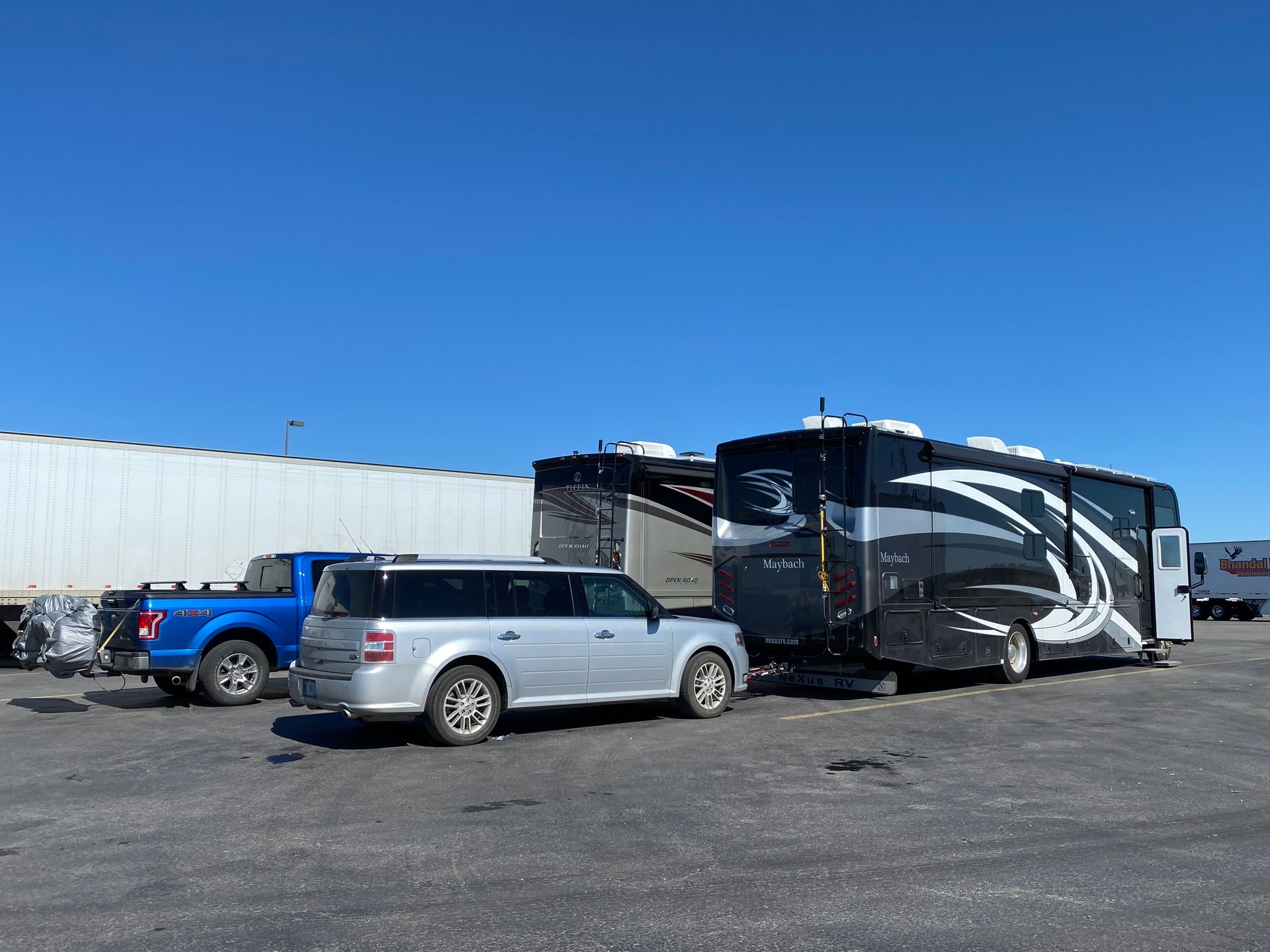
The Cons of Having Two Vehicles
Let's be honest about the downsides.
1. Significantly More Expensive
$4,000-7,000+ per year means $350-580+ every month locked into vehicle ownership. That money could go toward campground fees, emergency funds, or debt payoff. Only you can decide if convenience is worth the cost but be honest about what you're giving up.
Let’s also not forget that travel days now have higher gas expenses, as you are paying for two cars to get from point A to point B.
2. Increased Risk of Breakdowns and Repairs
Two vehicles mean double the chances something goes wrong. Tires, batteries, brakes, check engine lights—now multiply by two.
3. Logistical Challenges
Moving day complications: Who drives what? Coordinating arrival times. Parking two vehicles at tight campsites. Some campgrounds charge $5-10/night extra ($150-300/month if moving weekly).
Maintenance doubles: Two vehicles needing oil changes, inspections, repairs. Finding mechanics twice. Tracking maintenance schedules for both.
State-specific headaches: Extra registration fees, insurance variations for full-timers, emissions testing for both vehicles.
4. Space and Parking Considerations
Not every campsite can accommodate an RV, truck, AND second vehicle. Some boondocking spots don't have room. Urban camping at Walmart? Two vehicles makes you more noticeable—potentially getting asked to leave. Extra vehicle fees add up fast.
5. Environmental Impact
Two vehicles mean double emissions, more tires in landfills, more oil changes, and a larger carbon footprint. If environmental impact matters to you, one vehicle or supplementing with e-bikes significantly reduces your footprint.
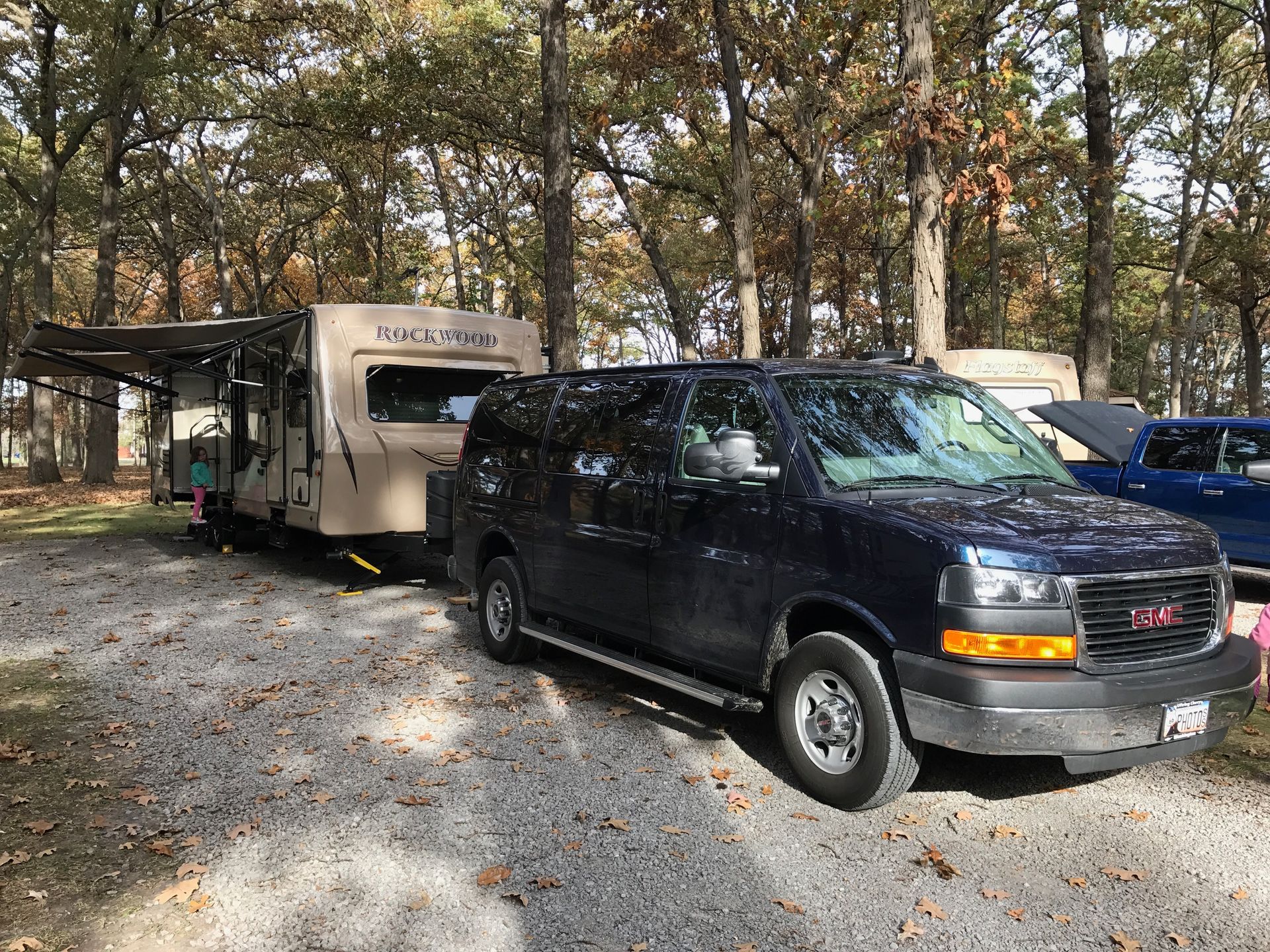
When One Vehicle Makes Sense
You Should Stick with One Vehicle If:
Your budget is tight: If $4,000-7,000/year feels significant, don't add a second vehicle. Choose financial stability over convenience every time.
Your RV setup allows it: Motorhome with a toad that seats everyone, truck/van reasonable for daily driving, or small enough RV that your towing vehicle is practical.
You're minimalists: You value simplicity over convenience, enjoy the challenge of making one work, and feel burdened by too much stuff.
Your travel style supports it: You use bikes/e-bikes for local transportation, or you're not driving dozens of miles daily.
Your family size supports it: Smaller families (2-4 people) fit comfortably without feeling cramped.
Bottom line: If one vehicle works financially, practically, and emotionally, stick with it. Don't add a second just because other RVers have one.
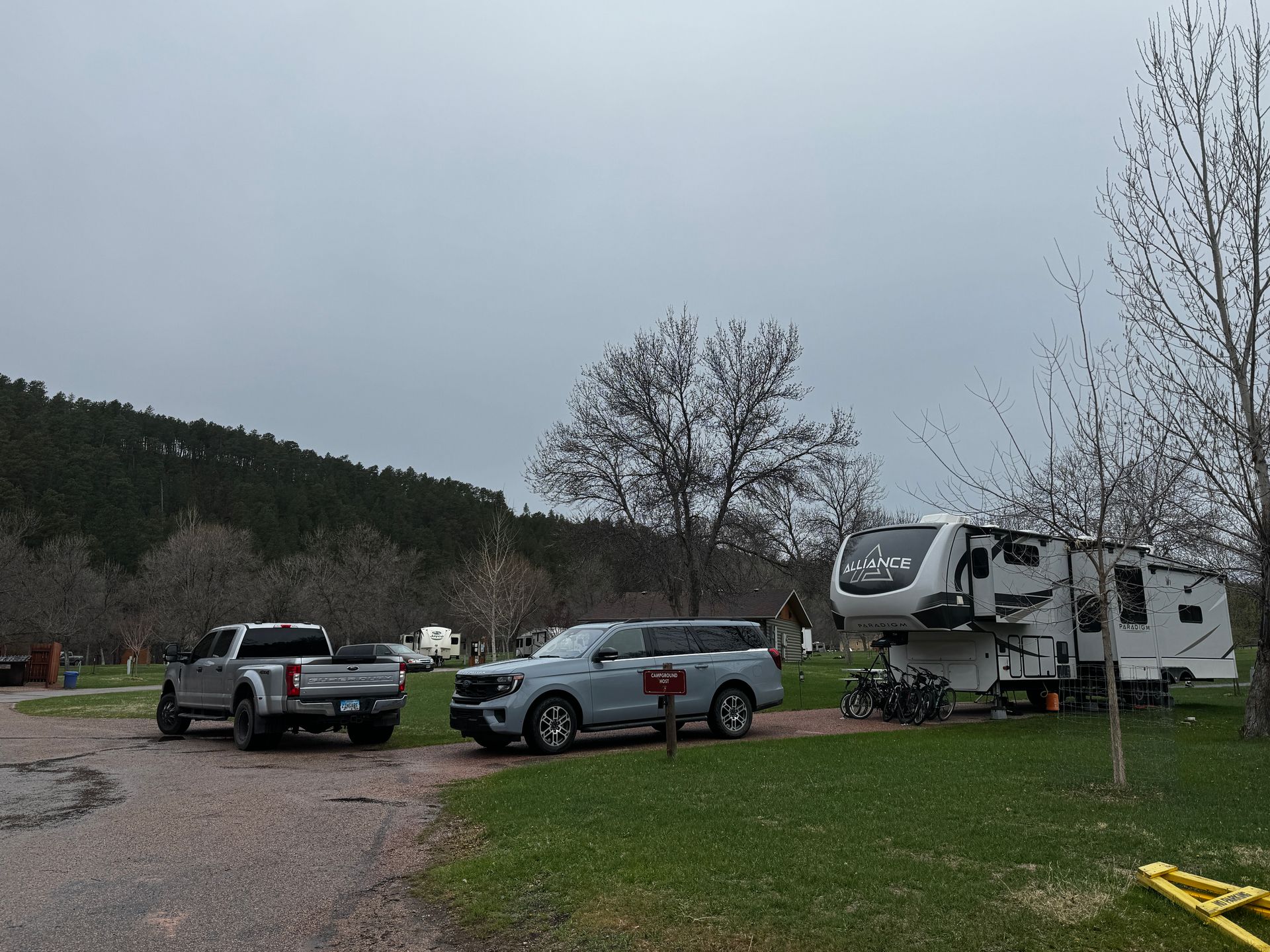
When Two Vehicles Make Sense
You Should Consider Two Vehicles If:
Your budget comfortably supports it: Can you afford $350-580/month without stress? Have an emergency fund? Not sacrificing other financial goals? The key word is "comfortably."
Your towing vehicle is impractical: Wide dually, terrible fuel economy, expensive and specialized, diesel overkill for errands. If daily driving is miserable, a second vehicle transforms your experience.
Your family size requires it: Large families (5+) feel cramped. Teens appreciate personal space. Family dynamics benefit from splitting up occasionally.
Your lifestyle demands flexibility: Lots of exploring, work camping where someone needs daily transportation, medical needs requiring reliable access, active family with different schedules.
Peace of mind matters: You value backup plans, feel anxiety about being stranded, want transportation if RV is in the shop.
Long-term financial thinking: Planning to keep expensive truck 10+ years. Lower miles mean higher resale value, fewer major repairs, longer time before replacement.
Bottom line: If your budget supports it, your towing vehicle is impractical, and your family genuinely benefits from flexibility, a second vehicle can be worth every penny. Just make sure it's a choice, not a financial burden.
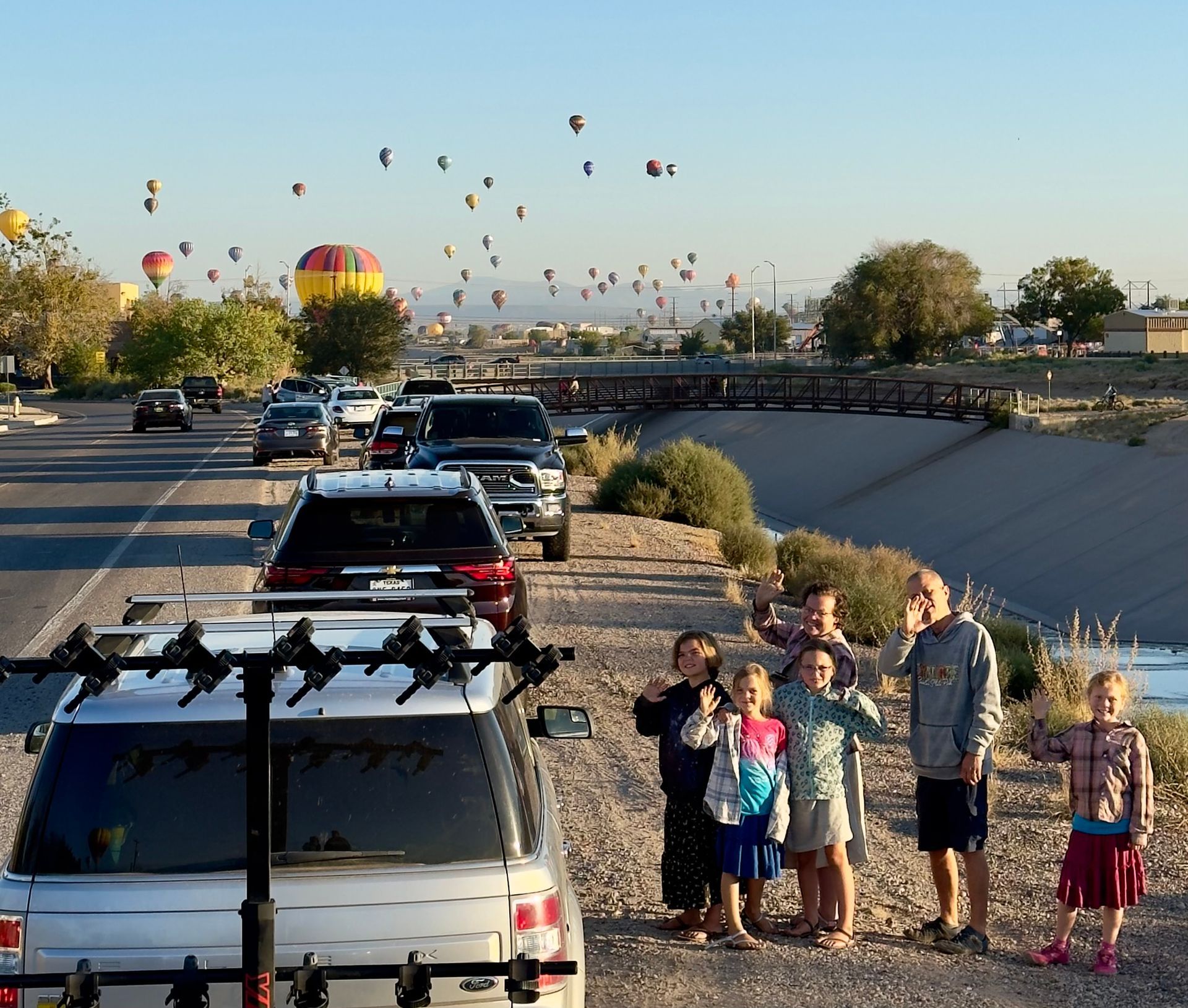
Alternative Solutions
Not ready to commit? There are middle-ground options.
E-bikes or Electric Scooters ($500-3,000 per bike): Great for campground areas and nearby towns. Can carry groceries. Limitations: weather-dependent, limited range, can't transport whole family. Best for couples or small families in good climates.
Uber/Lyft and Rentals (variable, $50-400+/week): If you rarely leave campsite area, occasional rides or rentals might be more economical. Best for RVers who stay put long periods.
Golf Carts ($5,000-15,000): Some RV resorts allow golf carts. Very limited range, only practical in specific resort environments. Best for long-term stays at golf cart-friendly resorts.
Motorcycles or Scooters ($2,000-15,000): Fuel-efficient, easy to store. Limitations: weather-dependent, limited cargo, not suitable for families. Best for solo travelers or couples who enjoy riding.
The takeaway: You don't have to jump straight to a full second vehicle. Test alternatives first.
Making Your Decision
Questions to Ask Yourself
Financial: Can we comfortably afford $4,000-7,000/year extra? Do we have an emergency fund first? Are we sacrificing other financial goals?
Practical: How often do we wish we had a second vehicle? Is our towing vehicle practical for daily driving? Do we explore a lot or stay at campgrounds?
Lifestyle: Do we value convenience over simplicity? Do we need flexibility for family to split up? Are we working while traveling?
Long-term: How long do we plan to full-time RV? Will family size/dynamics change? What's our 5-year plan?
My Honest Recommendation
Start with one vehicle if: You're new to full-time RV life, budget is uncertain, your towing vehicle is reasonable, you're not sure how long you'll RV.
Add second vehicle when: You've been full-timing 1+ years and consistently wish you had one, budget is solid, towing vehicle is impractical, family dynamics clearly need it, or you already have that second vehicle and it's paid off.
Remember
This isn't permanent. Your needs will change. There's no "right" answer for everyone. Financial stability matters more than convenience. Trust yourself to make the decision that feels right for YOUR life.
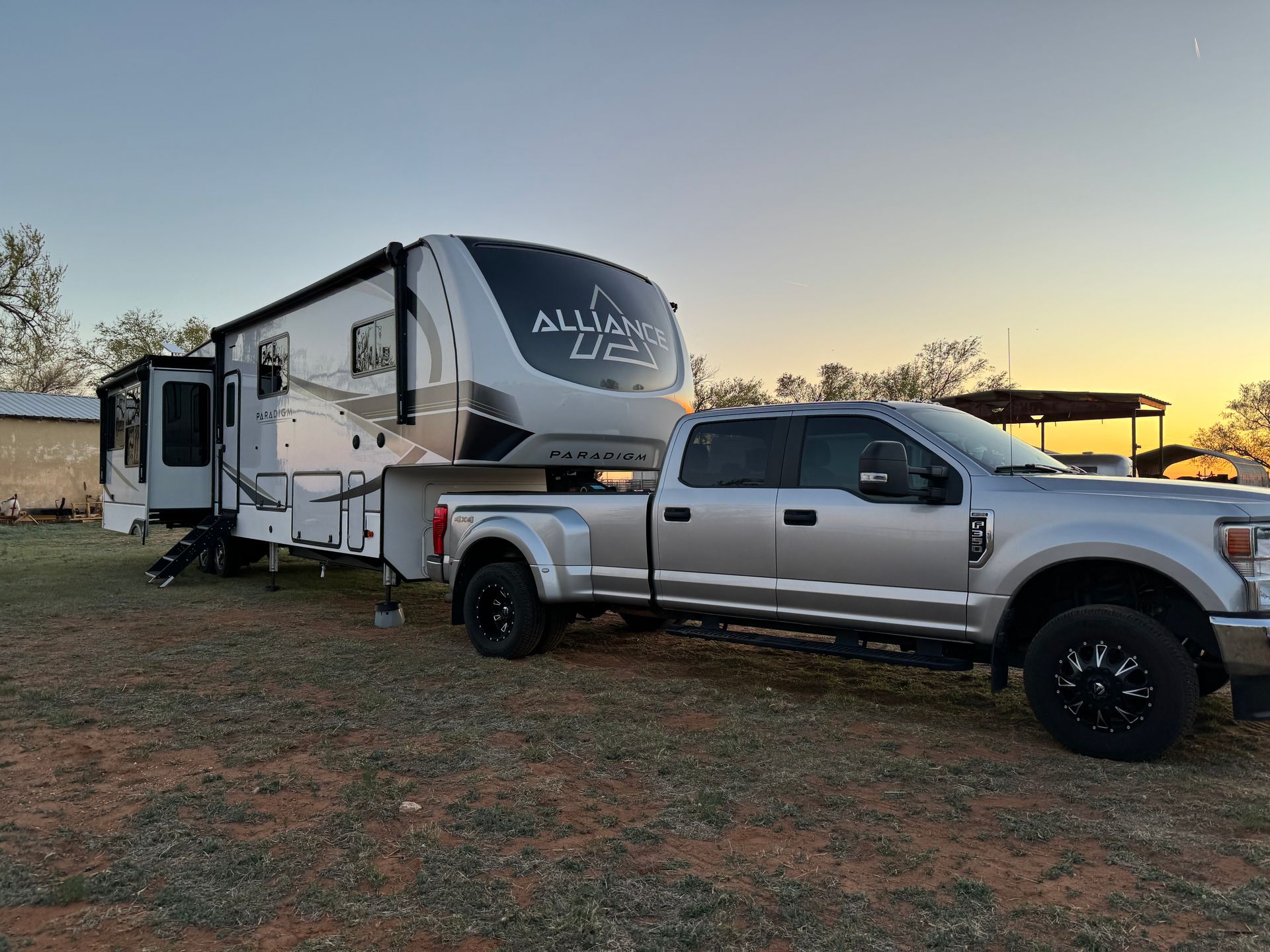
What's Right for Your Family?
Our Family's Bottom Line
We resisted a second vehicle for a long time. Since we already had the smaller vehicle, we gave it a try and discovered the benefits far outweighed the negatives.
Do we regret it? No. The convenience is real, and Philip's concerns were valid.
Would we do it differently? Maybe. It's comforting to know that if our finances got worse, we could drop that second vehicle for instant financial relief.
The Real Answer
One vehicle versus two isn't about right or wrong. It's about budget, lifestyle, and personal preference. Your situation is unique, honor that instead of comparing yourself to other RVers.
What Matters Most
Financial stability comes first. Don't go into debt for a second vehicle. Family harmony matters—make family life better, not harder. You can change your mind. Make decisions based on YOUR priorities.
Take Action
Considering a second vehicle? Rent one for a month first. Track how often you use it.
Happy with one vehicle? Don't feel pressured to add another.
Struggling with one? Run the numbers. Would alternatives work better?
Join the Learn to RV community to discuss with other families navigating these same decisions.
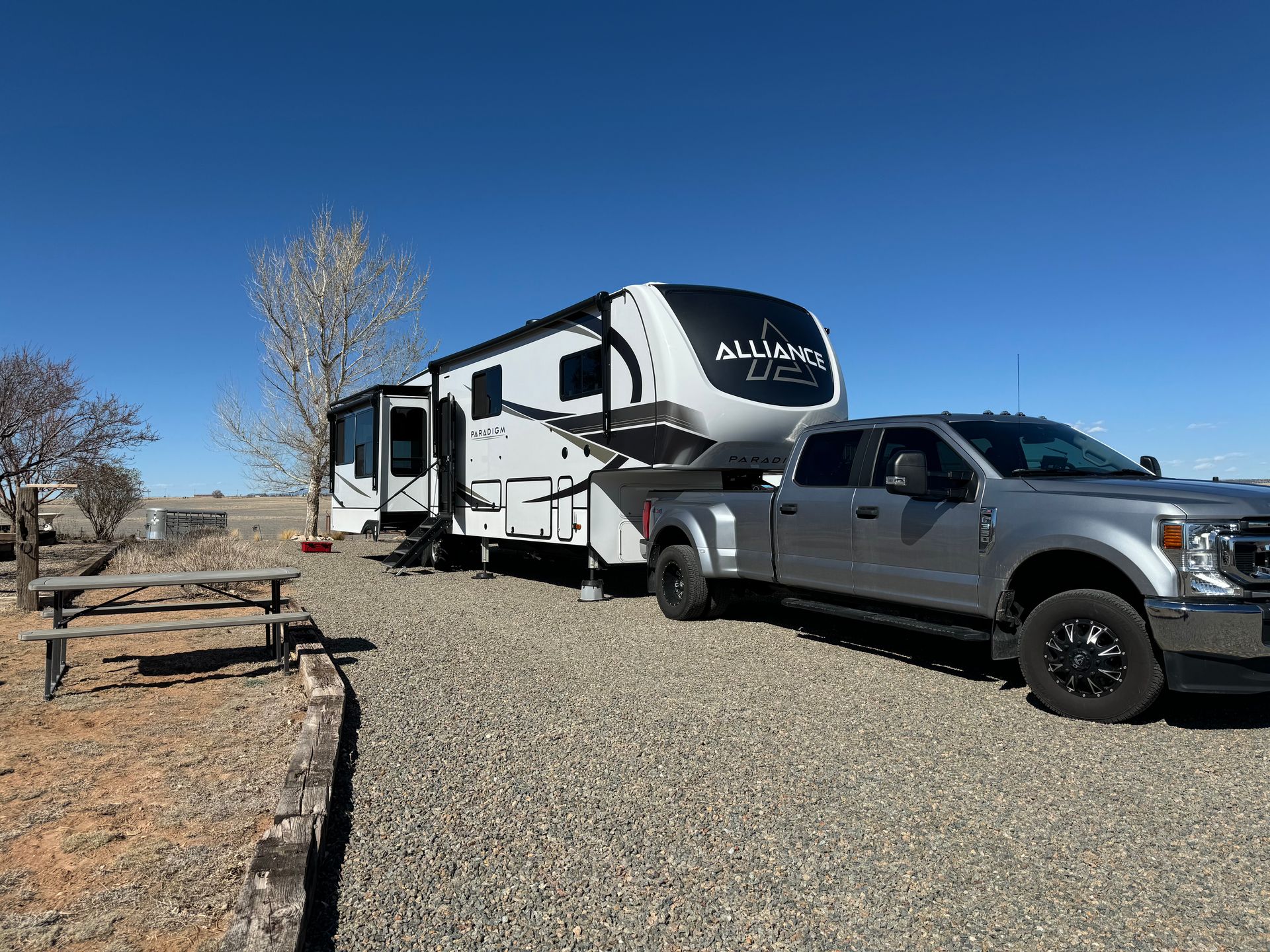
Final Thought
Whether you choose one vehicle or two, you're living an incredible adventure as a full-time RV family. The goal isn't perfection—it's finding what works best for YOUR family, YOUR budget, and YOUR lifestyle.
There's no universal right answer. Just the right answer for you.
Other blogs you might like...
